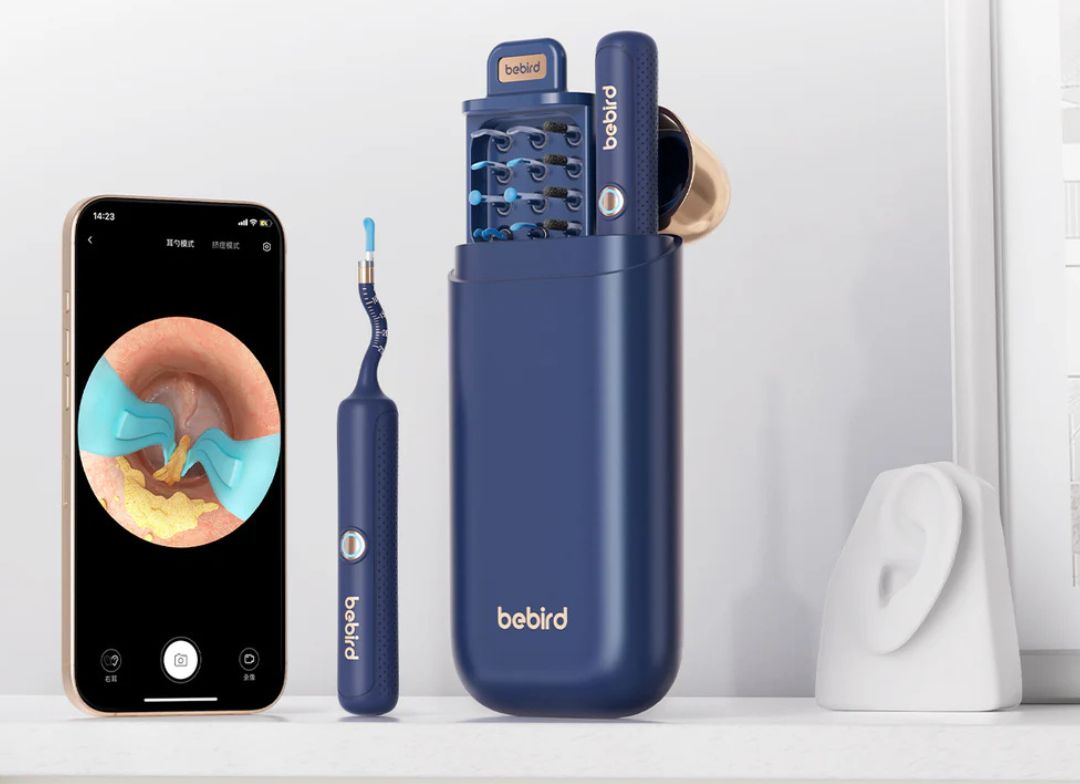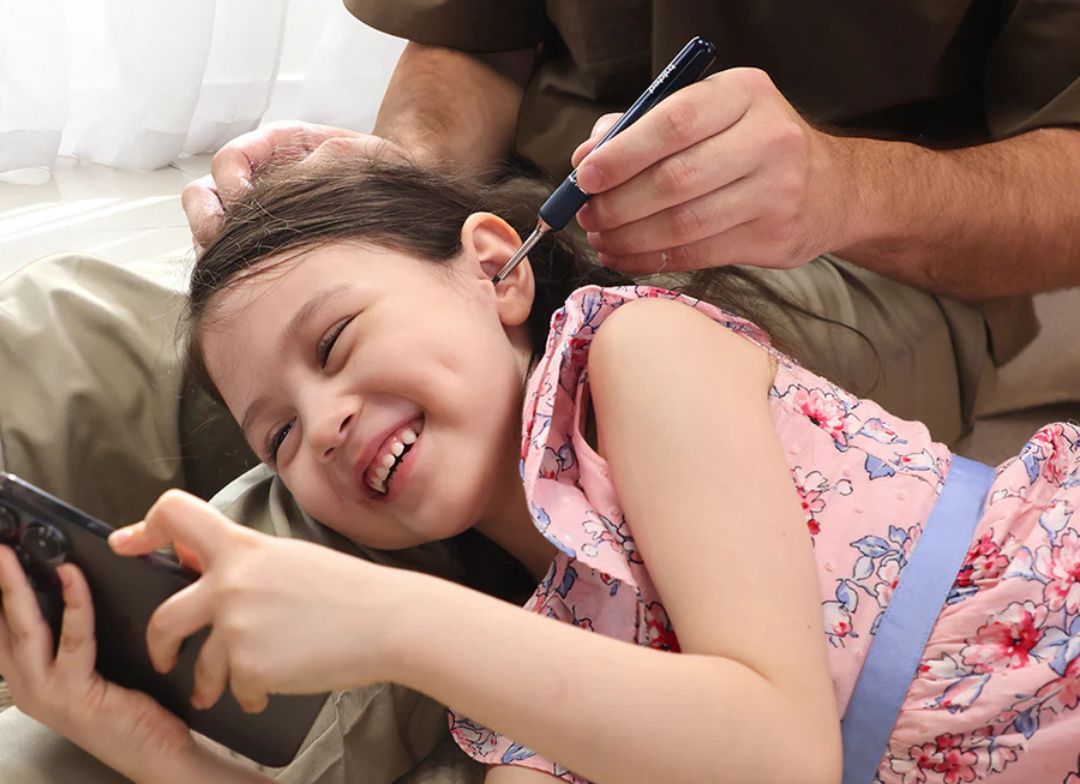Cleaning your ears is as important as cleaning your body. Cerumen, or earwax, is a naturally occurring substance in our ears that helps to protect our ears, but when it builds up excessively, as it can do, it can cause hearing impairment, discomfort, or even infection.
This is where the earwax cleaner tool can be useful. In this article, we are going to explain how these tools work as well as their types, selection criteria, and proper usage guidelines.
How Do Manual Earwax Tools Work?
Earwax removal manually is a simpler and more widely accepted procedure. These methods do not use batteries or electricity; they simply rely on your hands to do the work.
Here are some types of do-it-yourself earwax cleaner tools:
-
Ear Picks (Curettes): They are made of plastic or stainless steel and are either spoon, loop, or thin in shape. You gently put them in the ear and scoop the wax out. They require gentle and slow use.
-
Spiral Tools: These tools have a twisted design that you gently rotate inside the ear. The twisted shape helps in grabbing and removing wax without pushing it deeper.
-
Loop Tools: These are multi-piece ear cleaner kits containing hook-ended tools allowing you to easily remove wax.
Properly using manual tools will achieve great results, but these methods require care and precision. Used improperly, they can push wax deeper in or even injure the ear canal.

What Are the Different Types of Earwax Cleaner Tools?
Different types of tools for cleaning earwax have different types to meet people’s requirements and preferences. Below are some of the most common types to take note of:
Manual Ear Picks and Curettes
Ear picks and curettes are manual tools that are considered traditional methods of earwax removal. They are available in different types:
-
Spoon-shaped curettes: These have a rounded tip to scoop out the wax.
-
Loop tools: They have a loop end that helps to grab and pull out wax.
-
Spiral tools: These have a twisted design that allows them to be rotated to gather wax.
Although these tools are effective in earwax removal, careful handling is needed to avoid deep wax pushing and injuring the ear.
Ear Cleaning Kits
An ear-cleaning kit is a collection of tools and solutions designed specifically for ear cleaning. Some of the tools and their functions include:
-
Softening Drops: Solutions such as carbamide peroxide aid in the softening of hardened wax.
-
Bulb Syringes: Gently wash away softened wax with warm water.
-
Manual Tools: Picks and curettes, and other direct removal tools.
These kits provide a complete method for ear cleaning by integrating both chemical and physical techniques.
Ear Irrigation Systems
By flushing the ear canal with warm water, the ear irrigation technique used to remove wax from the ears—is to guarantee safe and efficient cleaning. Certain ear wax removal instruments use specialized irrigation systems with variable pressure settings.
Ear Cameras and Ear Wax Cameras
Recent advancements in technology led to the development of ear cameras and ear wax cameras, which are equipped with small cameras and lights.
-
Visual Aid: They connect to smartphones or computers, allowing people to view the ear canal in real time.
-
Attachments: They frequently come with tweezers or scoops designed to aid in wax removal.
These tools provide a visual guide while ensuring accurate cleaning and understanding of internal problems within the ear.
Electric Ear Wax Cleaner Tools
They are battery-operated and use light suction or vibrations to extract earwax.
-
Multiple Attachments: They typically include several ear tips to accommodate all ear sizes and sensitivities.
-
Ease of Use: They are simple to operate, making them easy for regular use.
For people who prefer not to manually clean their ears, electric ear wax cleaning tools are perfect.
Ear Drops
Earwax can be softened and broken down by using over-the-counter ear drops.
-
Hydrogen Peroxide-Based Drops: Assist in dissolving earwax.
-
Oil-Based Drops: Mineral and olive oil-based drops help lubricate the ear canal as well as soften wax buildup.
While these drops serve their purpose, they can also be paired with additional cleaning techniques to enhance efficiency.

How to Choose an Earwax Cleaning Tool That Suits You?
Choosing any tool to clean earwax is very personal and depends on the comfort level and expertise of the person. A few things to consider are as follows:
-
Sensitivity of Your Ears: If you are susceptible to irritation in your ear, whether by way of sensitivity or eczema in the ear canal, choose gentler options such as soft-tipped instruments (i.e., silicone earwax removal tool) or irrigation systems.
-
Accuracy and Visibility: For assured accuracy in wax removal, you may consider using a tool equipped with a camera because an ear camera or ear wax camera gives you a clear view inside your ear.
-
Simplicity and Ease of Use: Manual tools are often simple and practical, but they may also require some prior knowledge to be used properly. Electro–tools or irrigation kits, in this case, will fulfill your needs with less effort.
-
Budget: Basic earwax removal tools are inexpensive and will get the job done, while more advanced tools like ear cameras often come at a higher price, but they provide improved visibility and safer use.
-
Family Use: For sharing purposes, select a set with multiple tips to promote hygiene and prevent infection transmission.
-
Medical History: Do not use an ear wax removal device unless you are cleared by your doctor if you have a history of ear infections or surgeries.
What Should You Pay Attention to When Using an Earwax Cleaning Tool?
Safety is as important as the selection when using wax remover tools. The following are some safety measures:
-
Avoid Deep Insertion: Do not push something into your ear canal deeper than necessary. This may lead to a perforated eardrum or push the wax further down.
-
Use Softening Drops First: This will make the wax less hard and more manageable to remove.
-
Clean Your Tools: Always wash or disinfect the tools before and after use of the tools to prevent contamination.
-
Read Instructions Carefully: Tools have a manual or instructions that come along with it, which should be followed strictly.
-
Stop If You Feel Pain: Discomfort is a signal to stop the ear cleaning process, and consult a specialist if need be.
-
Avoid Daily Use: Your ears clean themselves naturally. These tools should be used only when absolutely necessary, not on a daily basis.
Summary
Cleaning tools help ensure the hygiene of ears, preventing excess earwax and reducing the risk of infection and other hearing problems. These include manual picks, electric tools, ear cleaning kits, ear cameras, or ear wax cameras—each each each with its own benefits.
If you are new to ear cleaning, using a camera-guided tool may help simplify the process and enhance safety. If you prefer more traditional methods, simple manual tools or softening and irrigation kits work equally well.
Always take the time to understand the approaches and techniques available alongside your personal needs to ensure that you are not creating discomfort or injury whilst using ear wax cleaning tools.
Related Reading:
Is Hydrogen Peroxide Safe for Cleaning Ears?
A Guide to Gauge Sizes for Ears: What You Need to Know
Personal Hygiene Products List: 10 Must-Haves for Daily Care









Leave a comment
All comments are moderated before being published.
This site is protected by hCaptcha and the hCaptcha Privacy Policy and Terms of Service apply.